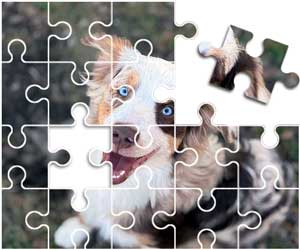
Pain Meds For Dogs Can Provide Relief But Should Never Be Taken Lightly
Cyberbullying is a word that has made it into our consciousness and is one that many parents dread hearing. They find out that their child has been bullied for weeks or months and that that they didn't know anything about it. Too embarrassed or afraid of consequences their child endured their suffering online, in social media, and in texts in silence.
The child wants relief from the endless pain and their parents, of course, want the same. But first they have to know what is happening. They have to know the signs to watch for. And they have to know what to do about it.
While children sometimes won't tell us about the pain they are in (and even hide it), our furry family members can't tell us. Like with cyberbullying, we have to be vigilant in order to see that they need our help to give them relief from the pain that they aren't able to handle themselves.

DragoNika | Dollar Photo Club
It's important to be alert to the signs that your dog is in pain.
When your Aussie is in pain you want to get them the relief they need with the right dog pain meds
When our dog is in pain we want to do what we can to help. Veterinarians can be expensive and it can be tempting to reach for the treatments that we know so well and have worked on us since we were kids. While it is true that many medications for humans will work just as well for dogs we still need to make sure about the dosages, and some drugs that are relatively harmless for us are downright dangerous for dogs.
Let's take a look at a few things about pain meds for dogs.
• How can I tell if my dog is in pain?
• Types of pain meds for dogs
• What to watch for with dog pain meds
Your dog can't speak, so how do they tell you they are in pain?
One day my Aussie, Levi, was out in the yard when I heard him yelp. I ran outside to find him with a pronounced limp. It was obvious that he was in pain. When running in the yard he had landed on a thick gauge wire and it stuck all the way through one of his pads. Ouch! I rushed him to the vet and he was fixed up in no time. But how can you tell if the pain is from something less obvious?
Dogs may not just yelp or whine when in pain making it easy for us to figure out. In some cases a dog might start licking a location as if they are grooming. Take note if it is a spot they normally groom but are taking an unusually long time. Another red flag would be if they are suddenly grooming an area they don't normally attend to. Carefully, check out the location to see if there is a wound, foreign object, insect bite, a rash or anything else that seems out of the ordinary.
How do you feel when you are in pain? You might be stressed out, distracted and irritable. A dog might pant, not be interested in food or activities she usually enjoys, may become reclusive and seemingly aggressive.
This odd behavior could extend to other physical signs. Suddenly she may avoid going up/down stairs or take them slowly. Her movements could seem stiff and tentative. If the pain makes it too difficult to move she may opt to soil in the house instead of going through all the trouble of going outside.
Once you know that something is wrong you and your vet can decide on a treatment protocol that may involve special dog pain medications.
Human pain meds versus pain meds for dogs
It is true that some medications for humans including pain medications can be used for dogs. However, many that we take for granted can be dangerous for dogs (and cats) so there are also special pain meds for dogs. While there is crossover please consult your vet before giving human drugs to determine their safety and correct dosage. (Human dosing does not translate to your dog.)
A great many aches and pains are caused by inflammation of the joints and tissue so you are likely to have your vet recommend an NSAID (Non-Steroidal Anti-Inflammatory Drug) like Rimadyl (Carprofen), Metacam (Meloxicam), Deramaxx (Deracoxib), or Previcox (Firocoxib).
These pain meds for dogs should be given as prescribed and you should not modify dosages or give other drugs (including OTC dog pain meds) without consulting with your vet first. And just because one of your dogs is taking it does not mean it is safe for your other dog. These drugs can affect the liver, kidneys and gastrointestinal tract and should not be taken with other NSAIDs or corticosteroids as these effects can be exacerbated, especially in dogs that have a pre-existing condition.
For drugs like Aspirin it is only recommended for short periods of time. You might be able to give "buffered" Aspirin tablets at a dosage of between 5mg and 10mg per pound of body weight (maximum of 10mg) given every 12 hours.
Remember, some dogs (like those with the pre-existing conditions described above) will not tolerate the meds well and it could be dangerous—even fatal. Aspirin can irritate the stomach and cause bleeding and ulceration.
Aspirin can also be dangerous to puppies, and dogs having surgery as it thins the blood and interferes with clotting. While there are pain meds for dogs like Aspirin that are formulated specifically for dogs (and are even chewable and come in liver flavour) it should not be taken lightly.
Your veterinarian can prescribe even stronger pain meds for dogs like Amantadine, Gabapentin, or Tramadol depending on the nature and severity of the pain. They may even need to resort to stronger drugs including opiates for short periods.
While we can't get into all of the pain meds for dogs and all of their potential interactions and side-effects here the important point is to keep in close consultation with your vet and know what to watch for.
What to watch for when your dog is taking pain meds
I hate to sound like an alarmist or a broken record but pain meds for dogs need to be taken seriously. You need to be paying close attention to your dog at this time. One problem is that some of the side-effects of the dog pain meds can be the same as those for pain itself. For example, changes in eating habits or other behavioural changes could be due to side-effects of the drugs.
Other things you need to watch out for are lethargy or depressed behavior. Sudden skin problems including rashes, scabs, or red spots. Gastrointestinal problems with vomiting, diarrhea or a black tarry stool (may indicate bleeding). Yellowing may become apparent in the whites of their eyes which can also be seen in their gums and skin.
You will need your vet to help you determine what is being caused by the pain, what is caused by an underlying disease condition and what is from the side-effects of your dog's pain meds themselves.
This article only scratches the surface and is meant as a "heads-up." You will want to do specific research as it relates to your dog and the cause of their pain, the meds they will be taking and the side-effect to be aware of, their pre-existing conditions, and any other variables that come up.
I hope that, if your dog is not feeling well now, you find the dog pain medication that allows them to be as comfortable as possible, as soon as possible. And if your Aussie is as smart as my Aussie you might want to make sure they are not on the computer and being cyberbullied on the internet.
WebMD/Pets – Pain Meds for Dogs
Have Dog Training Questions?
Check out these introductory dog training videos...
I want my dog to stop being aggressive.
I want some help training my new puppy.
I want my dog to stop barking at everything.
Get Australian Shepherd Info, Website Updates, Special Offers, and Cartoons...
FREE GIFT
You'll also receive a free copy of the ebook
My Everyday Dog Training Tools
by professional dog trainer Daniel Abdelnoor, "Doggy Dan"









